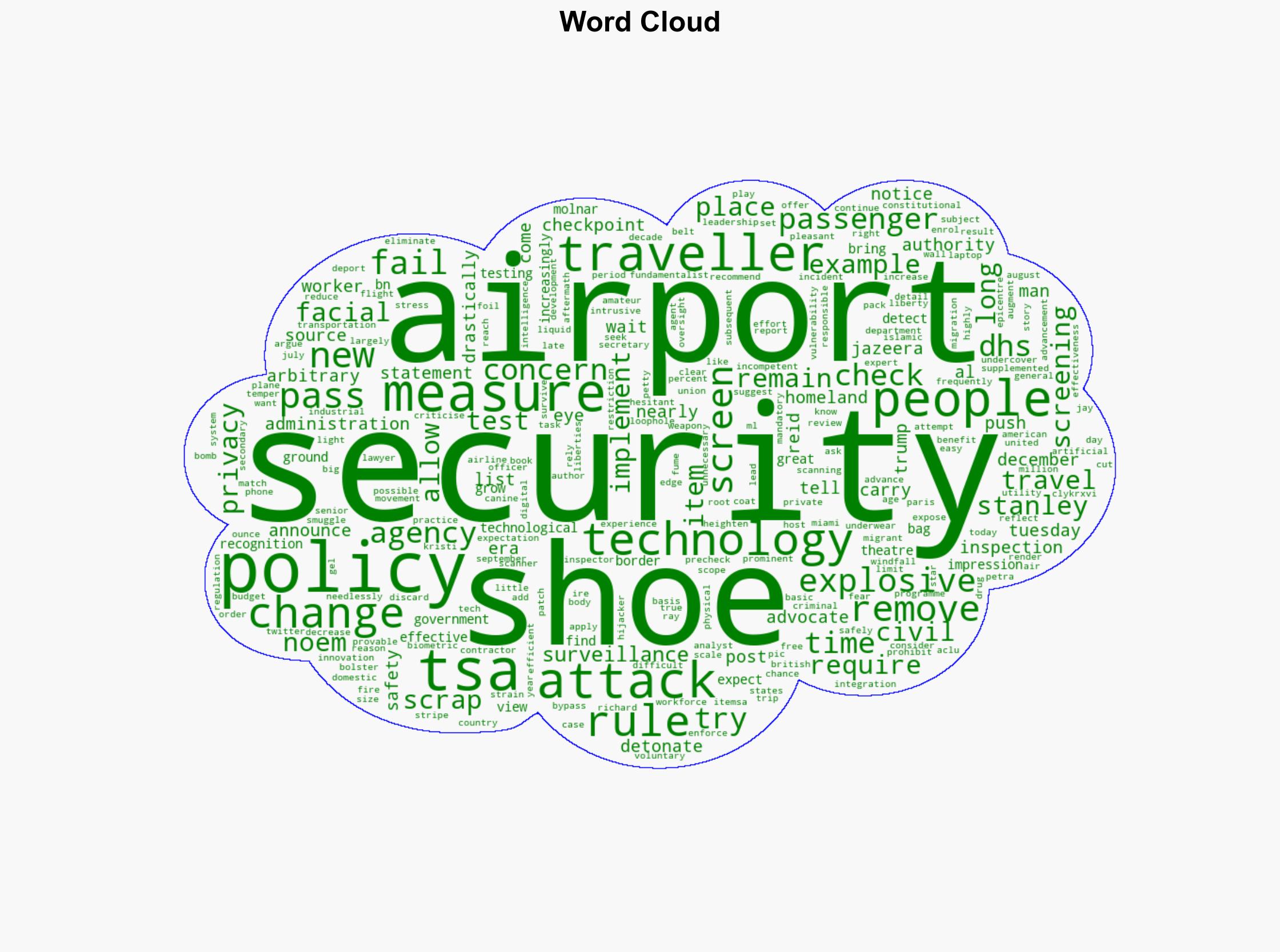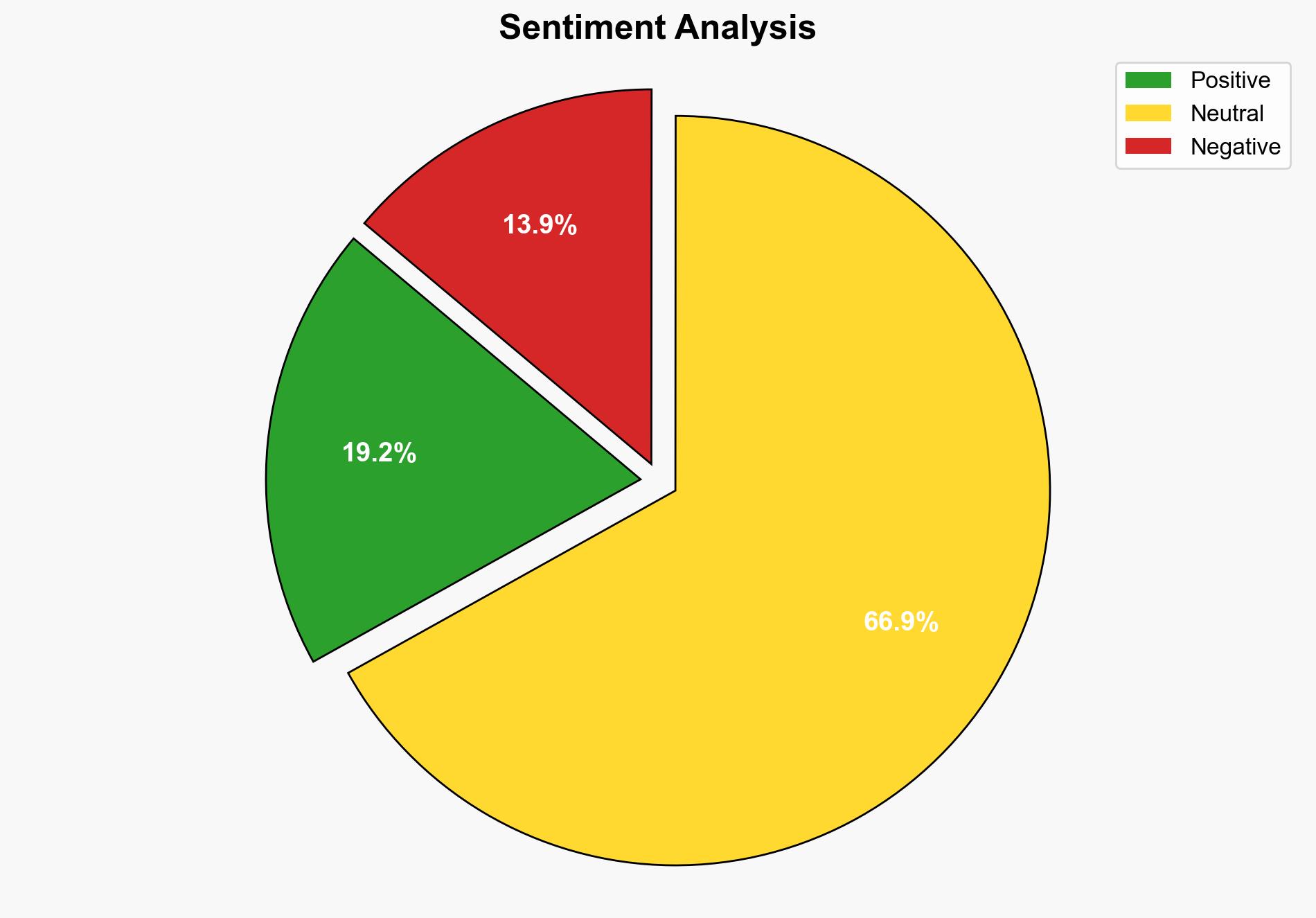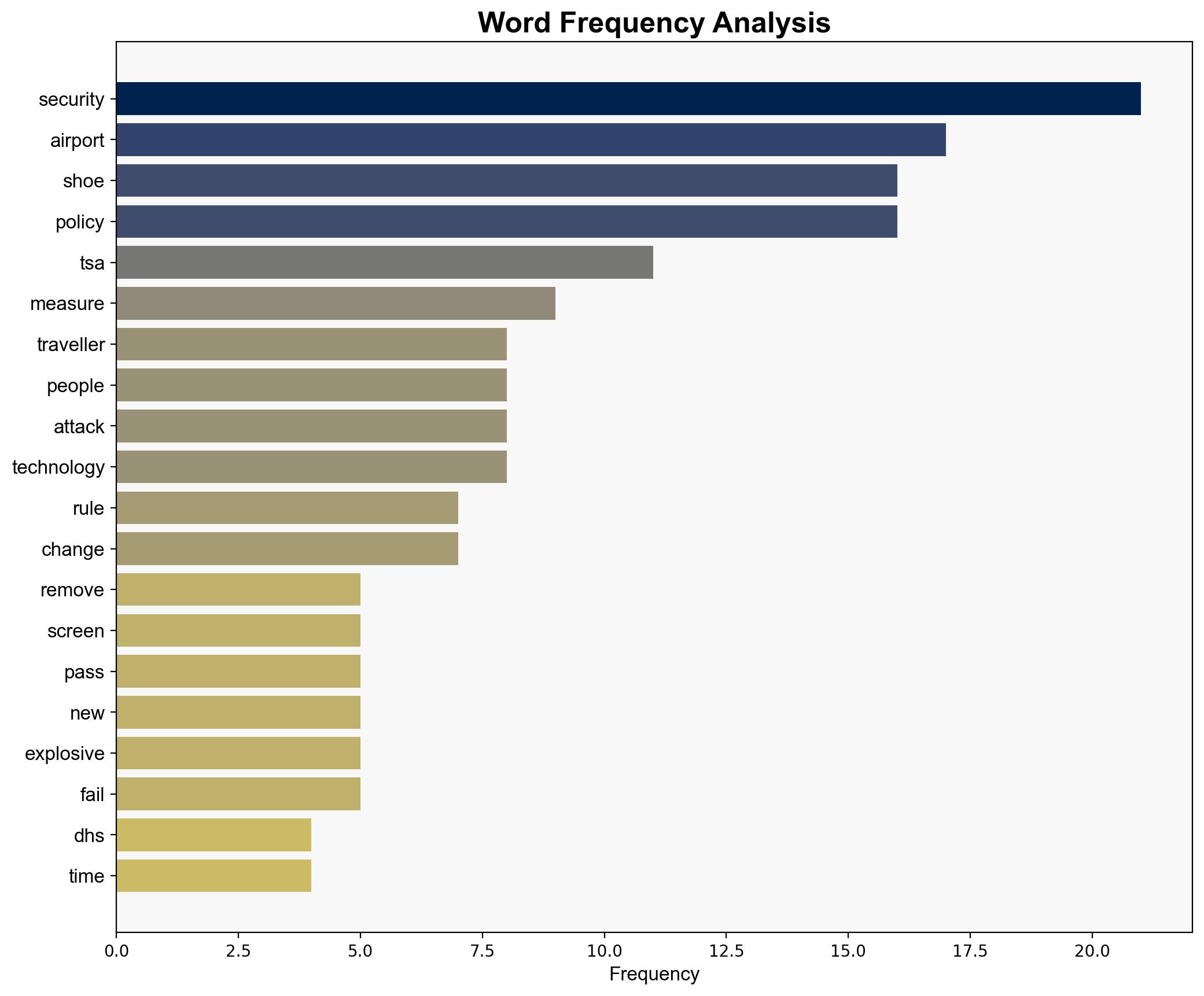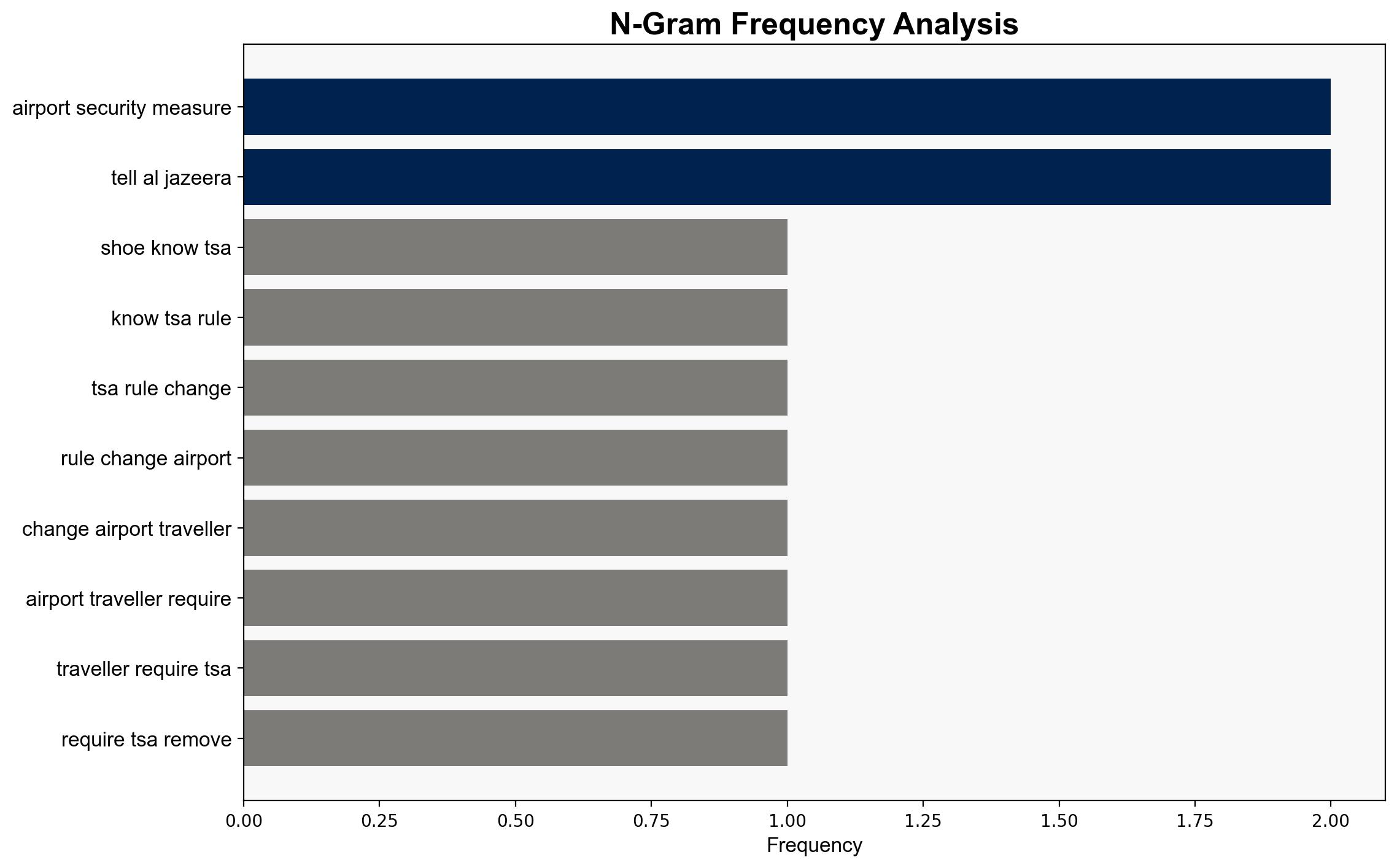Keep your shoes on What to know about the TSA rule change at US airports – Al Jazeera English
Published on: 2025-07-09
Intelligence Report: Keep your shoes on What to know about the TSA rule change at US airports – Al Jazeera English
1. BLUF (Bottom Line Up Front)
The Department of Homeland Security (DHS) has announced the removal of the long-standing requirement for travelers to remove their shoes during airport security screenings. This policy change aims to streamline the security process and reduce wait times, leveraging technological advancements. However, other security measures remain in place, and the effectiveness of this change in enhancing security is debated.
2. Detailed Analysis
The following structured analytic techniques have been applied to ensure methodological consistency:
Cognitive Bias Stress Test
The decision to eliminate the shoe removal policy may be influenced by public pressure and the perception of security rather than empirical evidence of its necessity. The analysis challenges the assumption that this policy was a significant deterrent to threats.
Bayesian Scenario Modeling
Probabilistic forecasting suggests a low likelihood of increased security threats due to this policy change, given the presence of other robust security measures like body scanners and canine units.
Network Influence Mapping
The influence of privacy advocacy groups and public opinion appears to have played a significant role in the policy shift. The DHS’s decision reflects a balance between security protocols and public convenience.
3. Implications and Strategic Risks
The removal of the shoe policy may lead to increased traveler satisfaction and reduced congestion at security checkpoints. However, it could also create a perception of reduced security vigilance, potentially emboldening adversaries. The reliance on technology must be continuously assessed to ensure it addresses evolving threats.
4. Recommendations and Outlook
- Continue to monitor the impact of this policy change on security effectiveness and traveler throughput.
- Enhance public communication to manage perceptions and provide transparency about ongoing security measures.
- Scenario-based projections: Best case – Improved traveler experience with no security compromise. Worst case – Exploitation of perceived security gaps. Most likely – Minimal impact on security with improved efficiency.
5. Key Individuals and Entities
Kristi Noem, Richard Reid, Jay Stanley
6. Thematic Tags
national security threats, cybersecurity, counter-terrorism, regional focus





